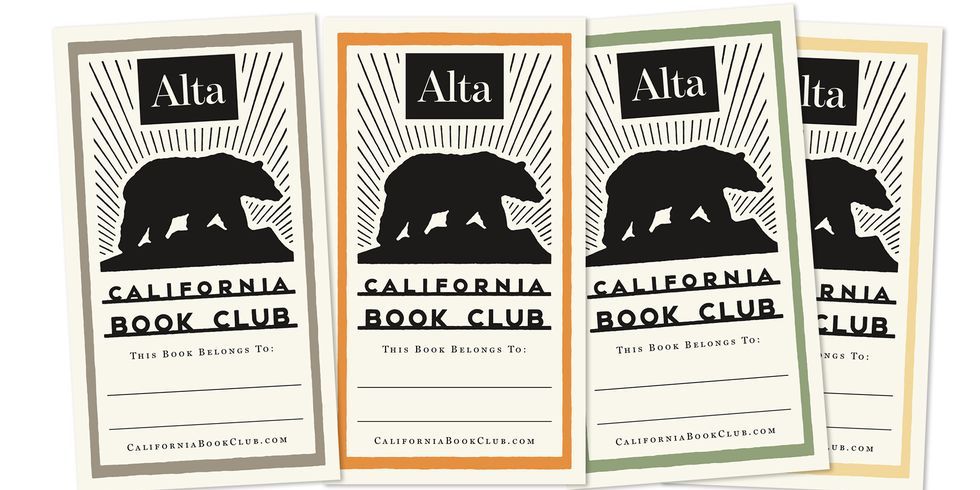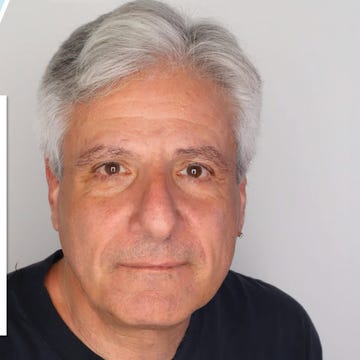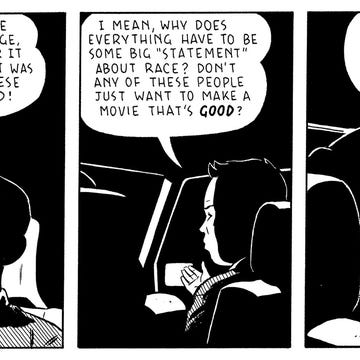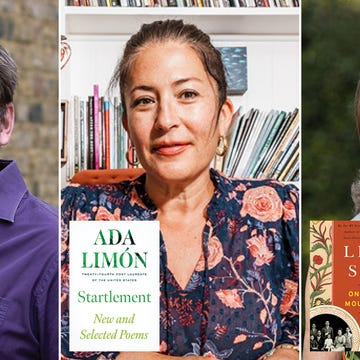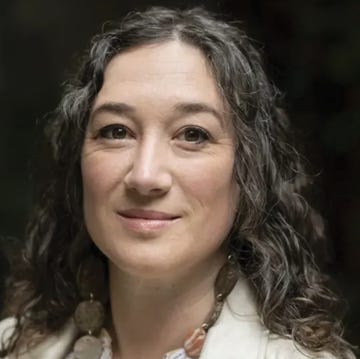I keep Joan Didion’s face on my bulletin board to pique my students’ curiosity.
“Who is that lady?” they ask, staring at the Joan Didion–face fan on some swag from the L.A. Times Festival of Books.
“Is that your grandma?”
“No,” I say with a laugh, imagining a world where I have my grandma’s face on a stick. “But my grandma went to high school with her. Joan Didion is a big deal.”
She is objectively a big deal. To writers. Readers. California. Yet I am struck by what a small deal she remains in Sacramento. When I asked my dad what it was like for Grandma to go to McClatchy High School with Didion, he said, “Who?”
Like critic, editor, and poet John Freeman, I attended Sacramento-area schools that prioritized East Coast, British, and classical writing. “What we didn’t read were Californians,” he notes in his forthcoming collection, California Rewritten. Me neither, or not enough. I loved those books, but literature was never something that belonged to me. My relationship to books was only to consume them. Writers were as distant to me as their characters. I’ve taught English in the same school system for two decades, and I can’t say we’ve fixed it.
This is not about Didion, though Sacramento’s relationship to the disembodied face on my bulletin board remains knotty. Sacramento appreciates her, but she’s not widely understood. This was apparent when, after the writer’s passing, the Historical Society held an unveiling ceremony for a statue of her at Golden 1 Center, complete with Didion quotes on the Jumbotron. Was its irony purposeful when it displayed “The future always looks good in the Golden Land because no one remembers the past”?
I’m hopeful that educators can keep situating ourselves and our students within the context of the California canon. We’ve come so far, but there’s room for systemic change. I’d wager that students at my school are mostly unable to imagine California as a literary landscape, and that means they’re largely unable to imagine themselves into it.
The constraints of public schools make them slow to change. Selection of a book for classes is a gargantuan task that’s usually shouldered by overburdened teachers. I won’t get too into the weeds, but the process of acquiring new books involves many hurdles over a period of years, even when there’s a rare influx of funding. My school, for example, has about 400 students per grade. Costs add up quickly. But teaching a book confers status upon that book over others. Of course, our students will assume that whatever we present to them, whether we like it or not, is “best.”
Textbooks are better, recently, about including California writers, but how much less likely are you to understand intergenerational relationships in the Bay Area if you read only one chapter of The Joy Luck Club rather than the whole novel? Full works like Maxine Hong Kingston’s genre-exploding The Woman Warrior, which Freeman says uses “the rhythm, the syntax, [and] the storytelling modes” as embodiments of character, have so much to teach about textual construction. What would it mean to study Héctor Tobar’s The Barbarian Nurseries alongside The Odyssey or Hamlet, or to complicate Steinbeck by pairing The Grapes of Wrath with Iris Jamahl Dunkle’s Sanora Babb biography, Riding Like the Wind, or Helena María Viramontes’s novel Under the Feet of Jesus? We can still do more.
Our duty as teachers isn’t just to expand representation but to help students develop their authority. A broad California curriculum would do that, and both Freeman’s California Rewritten and Alta Journal’s California Book Club allow us to imagine it.
At a recent talk on criticism, my fellow panelist, Dominican University of California professor and writer Claudia Morales, spoke to students about the power they have as readers. She said, “Literature belongs to all of us,” that it’s their responsibility and right to engage with it. In Sacramento, where, as Freeman notes, nearly everything bears the name of John Sutter, what if students read C Pam Zhang’s How Much of These Hills Is Gold, which, Freeman says, “looks right into this history and imagines it from within”? I can’t overstate the significance of allowing our students to see themselves in California literature, which is an affirmation of their own story.
I know it would energize my students to experience the stylishness of Leonard Gardner’s Fat City or the vibrancy of Tommy Orange’s There There. Reading these works from Sacramento, it’s easy to picture yourself just down the road in Stockton or at the Oakland Coliseum. Regional writing matters; it allows you to believe that you have the right to access books and that you live in a place of literary merit.
When we choose books well, it matters. One recent change to my district’s curriculum is the addition of Traci Chee’s YA novel We Are Not Free to the ninth grade. Not only was Chee’s polyphonic account of Japanese incarceration born out of her Bay Area family’s experience, but it has inspired a hyperlocal connection for our students. Our school’s library technician, Sarah Kimura, shares a similar family history as Chee and her characters. Several years ago, she began presenting to each freshman English class her family history. She finishes her talk with a primary-source analysis of my school’s past: She presents a yearbook from 1942 showing photos of many students of Japanese ancestry. The following year, those students disappear, and the yearbook shrinks in half. Nothing else we teach has this kind of direct impact. Chee’s novel allows students to understand that our high school doesn’t exist in a vacuum and that historical events that take place in her book also changed the population of our school.
As Freeman says of his Sacramento youth, “the underlying message I...absorbed was that culture came from elsewhere.” If you’ve never read Didion, you’d be unlikely to encounter critic Myriam Gurba’s essential essay that challenges her legacy. You’re less likely to believe that you, too, have that right, or that you should challenge the status quo, at all.
Isn’t that what we want for our students? The capacity to challenge the status quo? The power and ability to tell your own story? That’s literature, and it belongs to them.•
Join us on October 16 at 5 p.m. Pacific time, when Freeman will sit down with special guest host Walter Mosley to discuss California Rewritten. Register for the Zoom conversation here.
CONSPIRACY THEORY
Read Alta contributing editor David L. Ulin’s review of Thomas Pynchon’s latest novel, Shadow Ticket. —Alta
LEW ARCHER
Tom Zito writes about light and environment in Ross Macdonald’s noir novels. —Alta
BUY TICKETS!
John Freeman, Rebecca Solnit, and Paul Yamazaki will be in conversation at Litquake about California Rewritten on Wednesday, October 22, at 7:30 p.m. at the Verdi Club in San Francisco. —Eventbrite
ACTION FILM
Zito writes about Paul Thomas Anderson’s One Battle After Another, which was inspired by Pynchon’s novel Vineland. —Alta
Alta’s California Book Club email newsletter is published weekly. Sign up for free today.





